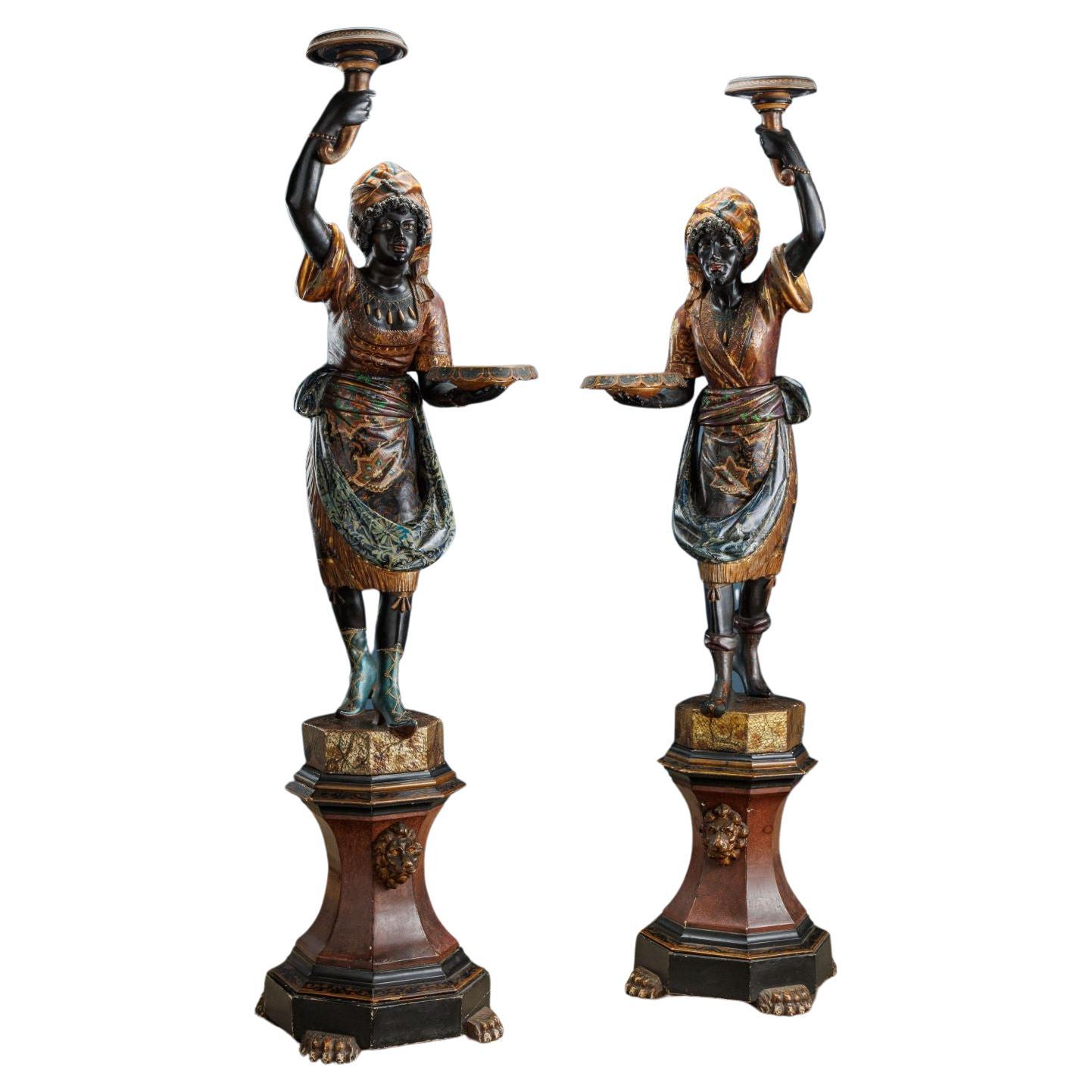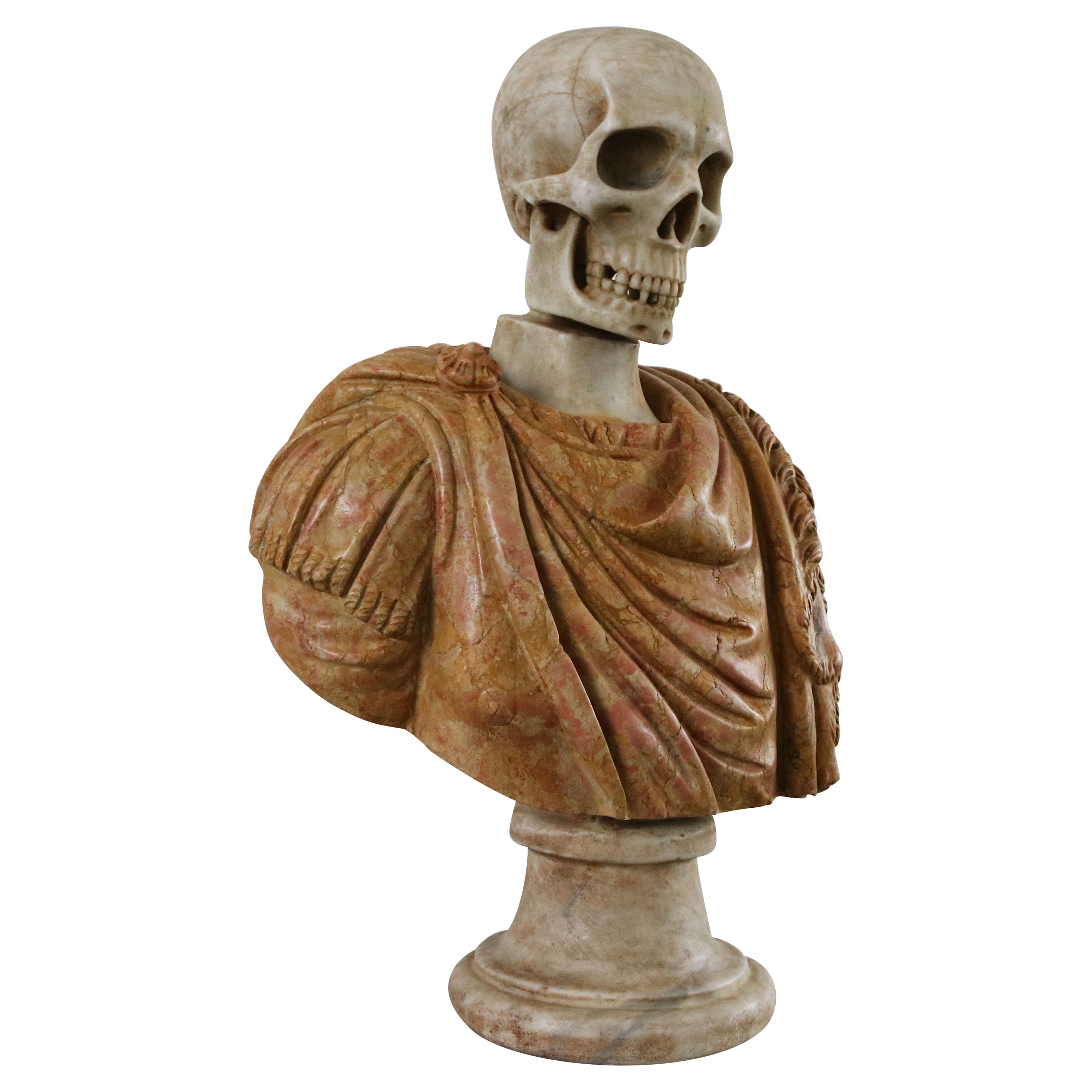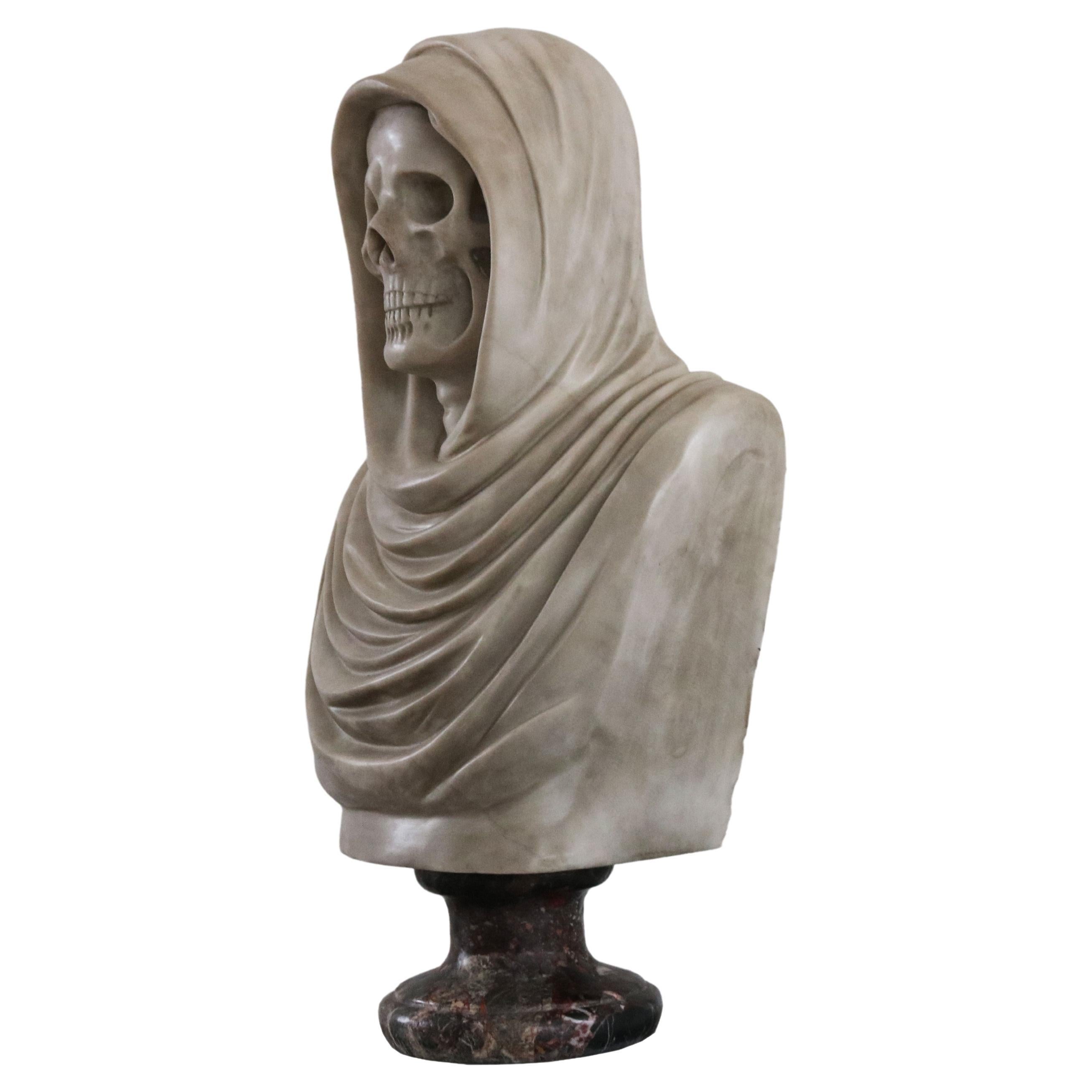Items Similar to Memento Mori chain seal, Saint Petrsburg, Russia, second half of 19th century.
Video Loading
Want more images or videos?
Request additional images or videos from the seller
1 of 13
Memento Mori chain seal, Saint Petrsburg, Russia, second half of 19th century.
About the Item
Chain seal in silver and jet.
The seal features a rectangular silver plate with a carved noble coat of arms representing a two-headed eagle. The matrix is crowned by a frame with a wavy profile enriched by sequential leaves. The body of the seal is made of jet, a mineraloid of vegetal origin, a variety of lignite, and is caged by a structure in lost wax cast in 88 zolotnik ( 916.6/1000) silver, depicting a Memento Mori with two skulls and bones, finely finished with a burin. Saint Petersburg, Russia second half of the 19th century.
- Dimensions:Height: 2.25 in (5.72 cm)Width: 1.25 in (3.18 cm)Depth: 1.25 in (3.18 cm)
- Materials and Techniques:
- Place of Origin:
- Period:
- Date of Manufacture:1860
- Condition:Wear consistent with age and use.
- Seller Location:Milan, IT
- Reference Number:1stDibs: LU917139054872
About the Seller
5.0
Vetted Seller
These experienced sellers undergo a comprehensive evaluation by our team of in-house experts.
Established in 1991
1stDibs seller since 2011
208 sales on 1stDibs
Typical response time: 2 hours
- ShippingRetrieving quote...Ships From: Milan, Italy
- Return PolicyA return for this item may be initiated within 7 days of delivery.
More From This SellerView All
- Folk Art Wooden Sculpture, USA, Second Half 19th CenturyLocated in Milan, ITFruit wood sculpture, Folk Art, depicting a man standing with his hands in his pockets. United States, second half of the 19th century.Category
Antique Late 19th Century American Figurative Sculptures
MaterialsFruitwood
- Rare decorative fruit basket made of wax. Italy, second half of the 19th centuryLocated in Milan, ITA rare decorative fruit basket made of wax. The elegant wicker basket contains an arrangement of colored wax fruit. The branches and leaves are made of wire, paper and colored fabric...Category
Antique 1870s Italian Figurative Sculptures
MaterialsMetal
- Memento Mori, Oil on Agate, Germany Beginning XVIII CenturyLocated in Milan, ITMemento Mori for Wunderkammer, depicting a skull and a tulip, oil paintings on hard stone. A large specimen of oval-shaped natural agate, with a black wooden frame, is mounted on a b...Category
Antique Mid-17th Century Italian Natural Specimens
MaterialsAgate, Brass
- Memento mori, skull with butterfly wings, Germany 1874.Located in Milan, ITA Memento Mori from Wunderkammer, depicting a skull, plaster cast covered with butterfly wings, applied to the crown-shaped skull and to the mosaic-type wooden base. The year 1874 is...Category
Antique 1870s German Figurative Sculptures
MaterialsPlaster, Wood
- Memento mori ivory handle walking stick, Germany 1860.Located in Milan, ITWalking stick: ivory carved handle, depicting a Memento Mori, a hand holding a skull. Malacca wood shaft. Silver ring. Horne ferrule. Germany circa 1860. (SHIP TO EU ONLY)Category
Antique Mid-19th Century German Figurative Sculptures
MaterialsIvory, Wood
- Memento Mori in Wood with Chrismon, Monogram of Christ, Italy End of 17th CentLocated in Milan, ITA Memento Mori in wood with Chrismon, monogram of Christ. Valuable sculpture in fruit wood in almost true-to-life measurements, sculpted with art and finished with a wealth of details. The wood was covered with a thin layer of pellet and finished in color. Immediately above the forehead, in correspondence with the anterior neonatal fontanel, the CHRISMON is painted in purple red. The monogram of Christ or Chi Rho (or CHRISMON) is a combination of letters from the Greek alphabet, which form an abbreviation of the name of Christ. Solar in nature, often inscribed in a circle with multiple rays reminiscent of the cosmic wheel deriving from the ancient solar emblems of Egypt. The symbol consists of two large overlapping letters, the 'X' and the 'P'. They correspond, respectively, to the Greek letter '?' ('chi', which reads kh, aspirated) and '?' ('rho', which reads r). These two letters are the initials of the word '???st??' (Khristòs ), the name of Jesus, which in Greek means "anointed" and translates the Hebrew "messiah". On the sides of these two letters, there are very often two others: one 'a' and one '?', alpha and omega...Category
Antique Late 17th Century Italian Figurative Sculptures
MaterialsWood
You May Also Like
- Pair of Moors. Venice, Second half of the 19th centuryBy Non-Standard Furniture and LightingLocated in Milano, ITPair of torch-holding sculptures depicting two Venetian Moors, one female figure and the other male. In a mirrored position of slight advancement, they hold a tray in one hand while ...Category
Antique Mid-19th Century Italian Baroque Revival Figurative Sculptures
MaterialsWood
- Italian Marble Bust Vanitas / Memento Mori 19th Century Carved Sculpture ItalyLocated in Ijzendijke, NLMasterfully carved Italian Vanitas bust in solid marble from late 19th century. White Carrara marble skull combined with a red Rosso Imperiale marble Ro...Category
Antique Late 19th Century Italian Renaissance Revival Busts
MaterialsMarble, Carrara Marble
- Rare 19th Century Italian Memento Mori Bust / Sculpture Carrara Marble VanitasLocated in Ijzendijke, NLMasterfully carved Italian Vanitas / Memento Mori bust in solid marble from late 19th century. White Carrara marble skull combined with masterfully...Category
Antique Late 19th Century Italian Renaissance Revival Busts
MaterialsCarrara Marble
- 19th Century Italian Roman Vanitas Bust Renaissance Revival Memento Mori MarbleLocated in Ijzendijke, NLMasterfully carved & most impressive Italian Vanitas bust in solid marble from late 19th century. White Carrara marble skull combined with a Belgian Bla...Category
Antique Late 19th Century Italian Renaissance Revival Busts
MaterialsBelgian Black Marble, Carrara Marble, Marble
- Italian Memento Mori skull - 17th centuryLocated in Bruxelles, BEItalian Memento Mori skull Marble North of Italy, 17th century H 9 x L 7 x P 14 cm At the turn of the 16th century, they were the height of fashi...Category
Antique 17th Century Italian Renaissance Figurative Sculptures
MaterialsMarble
- Sculpture Scipione Tadolini the Greek Slave Second Half of the, 19th CenturyBy Scipione TadoliniLocated in SAINT-JEAN-CAP-FERRAT, FRScipione Tadolini was a skilled sculptor whose broad talent covered the neoclassic to the romantic movements. His ancestors from a dynasty of Roman sculptors exerted a profound and lasting influence on the artistic production of the Eternal City. The Greek Slave fully demonstrates his masterly talent and serves as a reminder of antique models and the orientalist influences characterising the second half of the 19th century. Scipione Tadolini graduated from the Roman Academy and worked with his father on a series of celebrated portraits and ecclesiastical sculptures for Roman churches including a bust of Cardinal Giuseppe Alberghini for the Gesù (1847) and portraits of various members of the Cini family for the Church of Sant’Andrea della Valle (1844, 1846). Tadolini is also known as the author of a number of large-scale monuments for patrons around the world including an equestrian group of Simon Bolivar for the city of Lima, Peru. One of his best known sculptures is The Greek Slave which appears in his work from the late 1850s forward.The Greek Slave was created in several sizes in two variations: with the figure’s hand either raised to her chest or to her chin. The small number of versions all indicate the sculptor’s careful attention to the human form and passion with exoticism, which can be noticed through the tumbling folds of the present figure's headdress and the finely articulated jewellery...Category
Antique Mid-19th Century Italian Neoclassical Figurative Sculptures
MaterialsMarble





